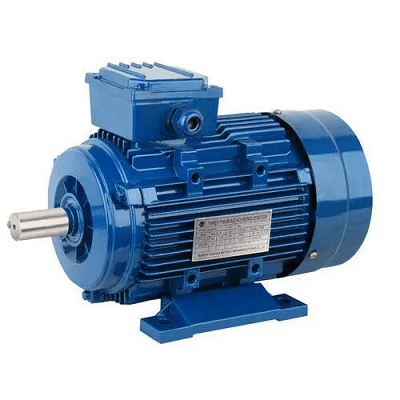Applications of Three-Phase Induction MotorAn electromechanical energy converter known as a three-phase induction motor, which converts the three-phase electrical input power into mechanical power at the output. 
A stator and a rotor make up a 3-phase induction motor. The stator is wound with three phases, whereas the rotor has a short-circuited winding known as the rotor winding. The stator winding is powered by the three-phase supply. Working Principle of a 3-Phase Induction MotorA part of a 3-phase induction motor may be used to demonstrate how it functions as follows: When a balanced 3-phase supply is used to power the 3-phase stator winding, a rotating magnetic field (RMF) is produced in the motor. The synchronous speed at which this RMF revolves around the stator is determined by, Synchronous speed Ns = 120f / P 
Applications of 3-Phase Induction MotorsThree-phase induction motors with warped rotors or slip rings have a variety of uses.
Applications of 3-Phase Squirrel Cage Induction MotorsInduction motors with squirrel cages come in a variety of standard designs to meet the various starting and operating needs of various industrial applications. The most crucial design element for squirrel cage motors is the effective resistance of the rotor cage circuit. The following list includes the uses for several kinds of squirrel cage induction motors: Class A MotorsNormal beginning torque, high starting current, and minimal operating slip are all characteristics of class-A squirrel cage induction motors (from 0.005 to 0.015). This motor's single-cage rotor offers a low resistance. The efficiency of class-A motors is great at full load. As a result, these motors are appropriate for loads such as:
Class B MotorsThe beginning torque, starting current, and operating slip of Class-B motors are all normal. Utilizing a double-cage or deep bar rotor will preserve the beginning torque while decreasing the starting current by increasing the leakage reactance. The majority of people utilize these motors for full-voltage starting. As a result, they are also employed for loads like centrifugal pumps, fans, and blowers, among other things. Class C MotorsHigh beginning torques and low starting current are characteristics of class-C motors. These motors use deep-bar rotors or twin cages with strong resistance. Class-C motors are used for basically constant-speed loads with moderately high torque and low beginning current requirements. Therefore, these motors are employed to move loads like reciprocating pumps, conveyors, compressors, and crushers. Class D MotorsThe class-D motors have the highest starting torque of any squirrel cage induction motors. These motors employ high resistance materials like brass for the rotor conductor bars instead of copper or aluminum. Low starting current and high operating slip (between 0.08 and 0.15), which result in low running efficiency, are characteristics of class-D squirrel cage motors. Therefore, these motors are utilized to power intermittent loads like punch presses, bulldozers, die-stamping machines, and shears that require heavy impact and quick acceleration. The motor is to be connected to a flywheel, which supplies the kinetic energy upon impact.
Next TopicWhat is Dielectric Heating
|
 For Videos Join Our Youtube Channel: Join Now
For Videos Join Our Youtube Channel: Join Now
Feedback
- Send your Feedback to [email protected]
Help Others, Please Share










